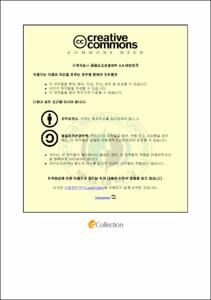컴퓨터적 집적영상과 셀룰러오토마타 기반의 3차원 영상 워터마킹 및 암호화
- Alternative Title
- 3D image watermarking and encryption using computational integral imaging and cellular automata
- Abstract
- In this thesis, we present a 3D optical image watermarking and encryption technique based on computational integral imaging and cellular automata. This thesis mainly contains two parts: In the first part, we present a 3D watermark based medical image watermarking scheme. Region of interest (ROI) of a medical image is an area including important diagnostic information and must be stored without any distortion. This algorithm for application of watermarking technique for non-ROI of the medical image preserving ROI. In this method, a 3D watermark object is first decomposed into 2D elemental image array (EIA) by a lenslet array, and then the 2D elemental image array data is embedded into the host image. The watermark extraction process is an inverse process of embedding. The extracted EIA through the computational integral imaging reconstruction (CIIR) technique, the 3D watermark can be reconstructed. Because the EIA is composed of a number of elemental images possesses their own perspectives of a 3D watermark object. Even though the embedded watermark data badly damaged, the 3D virtual watermark can be successfully reconstructed. Furthermore, using cellular automata transform (CAT) with various rule number parameters, it is possible to get many channels for embedding. So our method can recover the weak point having only one transform plane in traditional watermarking methods.
In the second part of the thesis, an optical image encryption method is proposed. Integral imaging can provide a feasible and efficient technique for optical image encoding system. The CIIR technique reconstructs a set of plane images along the output plane, whereas the resolution of the reconstructed images will degrade due to the partial occlusion of other reconstructed plane images. Meanwhile, CIIR is a pixel-overlapping reconstruction method, in which the superimposition causes the undesirable interference. To overcome these problems, we utilize the Bp neural network algorithm to eliminate the occlusion-disturbance. In the encryption, a computational integral imaging pickup technique is employed to record the input image to form an EIA. The EIA is then encrypted by combining the use of maximum length cellular automata (CA) encoding algorithm.
The effectiveness of the proposed scheme is demonstrated with the aid of experimental results.
- Issued Date
- 2014
- Awarded Date
- 2014. 8
- Type
- Dissertation
- Publisher
- 부경대학교
- Affiliation
- 대학원
- Department
- 대학원 정보통신공학과
- Advisor
- 김석태
- Table Of Contents
- I. Introduction 1
II. Cellular automata 6
2.1 Definition of cellular automata 6
2.2 Cellular automata transforms 8
2.2.1 One-Dimensional CAT based 9
2.2.2 Two-Dimensional CAT based 11
2.3 Maximum length cellular automata 14
2.4 90/150 maximum length cellular automata 15
III. Integral imaging 19
3.1 Conventional integral imaging 19
3.2 Computational integral imaging 21
IV. 3D watermark-based digital image watermarking for telemedicine 24
4.1 Previous research 24
4.2 Computational integral imaging reconstruction 26
4.3 Region of interest 27
4.4 3D watermark embedding process 31
4.5 3D watermark reconstruction process 34
4.6 Experimental results and analysis 35
4.7 Conclusion 44
V. Image encoding based on computer-generated integral imaging 45
5.1 Previous research 45
5.2 Computer-generated integral imaging system 47
5.3 Deblur the reconstructed images with the BPNN algorithm 50
5.4 Hybrid cellular automata 54
5.5 Fibonacci transforms algorithm 59
5.6 Simulation results and performance analysis 61
5.7 Conclusion 83
VI. Conclusions 84
References 86
- Degree
- Doctor
- Files in This Item:
-
-
Download
 컴퓨터적 집적영상과 셀룰러오토마타 기반의 3차원 영상 워터마킹 및 암호화.pdf
기타 데이터 / 3.37 MB / Adobe PDF
컴퓨터적 집적영상과 셀룰러오토마타 기반의 3차원 영상 워터마킹 및 암호화.pdf
기타 데이터 / 3.37 MB / Adobe PDF
-
Items in Repository are protected by copyright, with all rights reserved, unless otherwise indicated.